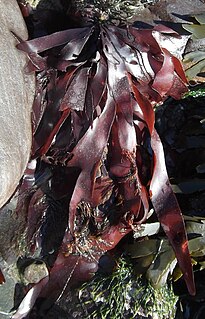
Palmaria palmata, also called dulse, dillisk or dilsk, red dulse, sea lettuce flakes, or creathnach, is a red alga (Rhodophyta) previously referred to as Rhodymenia palmata. It grows on the northern coasts of the Atlantic and Pacific Oceans. It is a well-known snack food. In Iceland, where it is known as söl, it has been an important source of dietary fiber throughout the centuries.

Alaria esculenta is an edible seaweed, also known as dabberlocks or badderlocks, or winged kelp. It is a traditional food along the coasts of the far north Atlantic Ocean. It may be eaten fresh or cooked in Greenland, Iceland, Scotland and Ireland. It is the only one of twelve species of Alaria to occur in both Ireland and in Great Britain.

Fucus serratus is a seaweed of the north Atlantic Ocean, known as toothed wrack or serrated wrack.
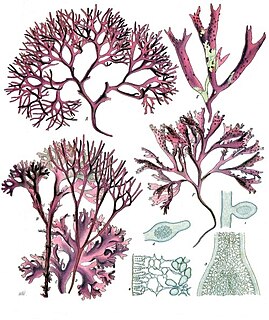
Mastocarpus stellatus, also called Clúimhín Cait, carragheen, or false Irish moss, is a species of red algae closely related to Irish Moss, or Chondrus crispus. It is collected in Ireland and Scotland, together with Chondrus crispus as Irish moss, dried, and sold for cooking and as the basis for a drink reputed to ward off colds and flu.
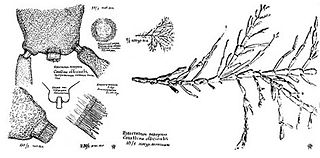
Corallina officinalis is a calcareous red seaweed which grows in the lower and mid-littoral zones on rocky shores.

Polysiphonia is a genus of filamentous red algae with about 19 species on the coasts of the British Isles and about 200 species worldwide, including Crete in Greece, Antarctica and Greenland. Its members are known by a number of common names. It is in the order Ceramiales and family Rhodomelaceae.
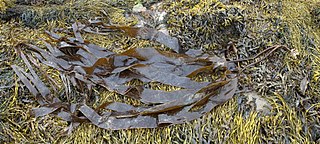
Laminaria digitata is a large brown alga in the family Laminariaceae, also known by the common name oarweed. It is found in the sublittoral zone of the northern Atlantic Ocean.
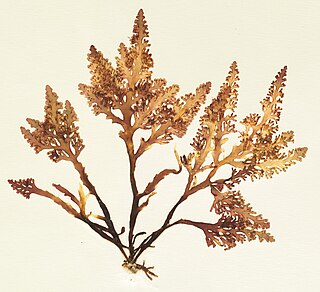
Osmundea pinnatifida is a species of red alga known by the common name pepper dulse.

Polysiphonia lanosa is a common species of the red algae (Rhodophyta) often to be found growing on Ascophyllum nodosum.
Polysiphonia denudata is a small red alga, Rhodophyta, growing as tufts up to 20 cm long without a main branch axis.
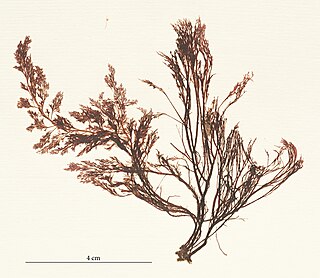
Polysiphonia elongata is a small red marine algae in the Rhodophyta.

Polysiphoides fucoides (Hudson) Greville is a common marine alga in the Division Rhodophyta.
Brongniartella byssoides Schmitz is a small red marine alga.

Halidrys siliquosa is a large marine brown algae.

Plocamium cartilagineum is a medium-sized red marine alga.

Delesseria sanguinea is a red marine seaweed.

Phycodrys rubens is a red marine alga of up to 30 cm long.
Phyllophora pseudoceranoides, the stalked leaf bearer, is a small marine red alga.

Odonthalia dentata is a medium sized marine red alga.
Gastroclonium reflexum is a small red marine seaweed.

















